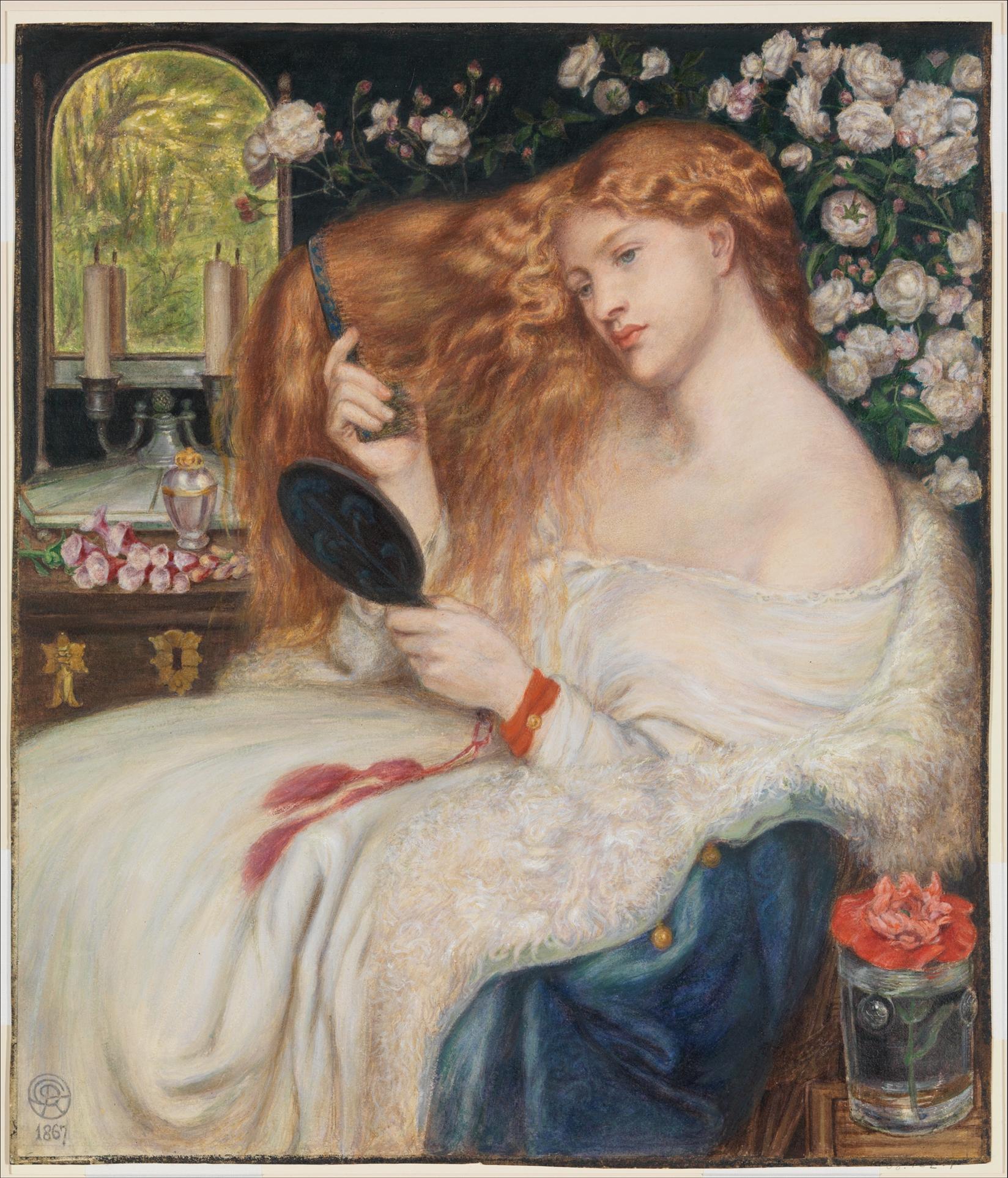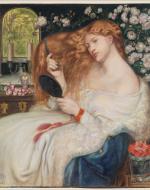Created by Austyn Thomas on Fri, 10/16/2020 - 15:51
Description:
Lady Lilith, painted by Dante Gabriel Rossetti, is interesting because it's a unique portrayal of womanhood in comparison to Rossetti's other works. Many of Rossetti's female subjects in his paintings are representative of the "Angel of the House" archetype of womanhood, for example in his painting Blessed Damozel, which shows a woman in heaven looking down at her lover longingly. In fact, this portrayal of women is fairly common for paintings of this time, in that they are seen as beautiful objects often focusing their attention on men or family rather than themselves. What makes Lady Lilith so different is that her attention is focused only on herself. The Lady is beautiful and portrayed in a seductive manner with her hair down and her sleeve falling on one side, but she doesn't give any visual invitation to be looked at, she is on display for herself rather than a male viewer. Lilith is not portrayed as the delicate and submissive female figure that was so common, she is more of a figure that embraces her natural feminine nature. Because of this, rather than representing the "Angel of the House", Lilith represents the "Monster", who is seen as vain and devious. In fact, in Rossetti's sonnet "Body's Beauty" from The House of Life, he explains the character of Lilith.
"Of Adam's first wife, Lilith, it is told
(The witch he loved before the gift of Eve,)
That, ere the snake's, her sweet tongue could deceive,
And her enchanted hair was the first gold.
And still she sits, young while the earth is old,
And, subtly of herself contemplative,
Draws men to watch the bright web she can weave,
Till heart and body and life are in its hold.
The rose and poppy are her flowers; for where
Is he not found, O Lilith, whom shed scent
And soft-shed kisses and soft sleep shall snare?
Lo! as that youth's eyes burned at thine, so went
Thy spell through him, and left his straight neck bent
And round his heart one strangling golden hair."
(D.G. Rossetti, Sonnet LXXVIII "Body's Beauty", The House of Life.)
The portrayal of a woman who embraces and revels in her femininity as something wicked is very telling of the attitude towards women in the Victorian era. Women were often either seen as perfect, lifeless angels, or vain, wicked beings. It's also worth mentioning that in this original painting, Rossetti used his mistress, Fanny Cornforth, as the model.
Copyright:
Associated Place(s)
Featured in Exhibit:
Artist:
- Dante Gabriel Rossetti


